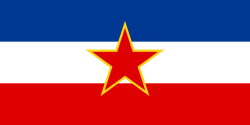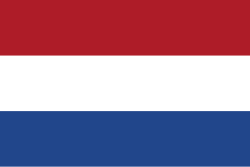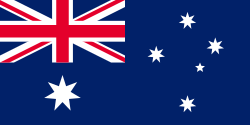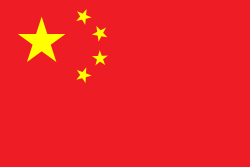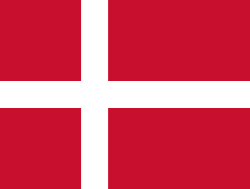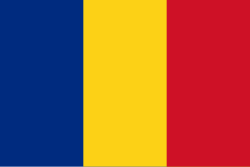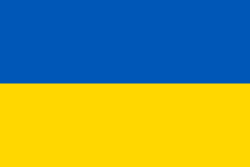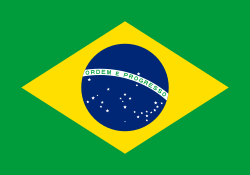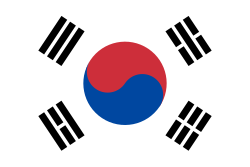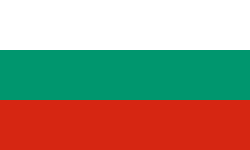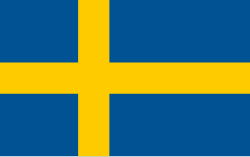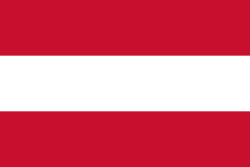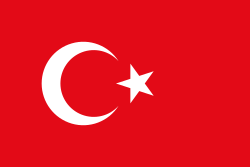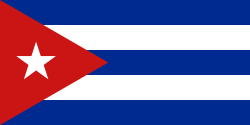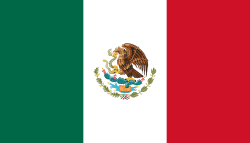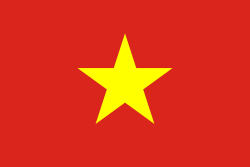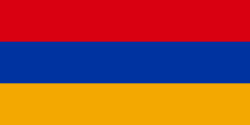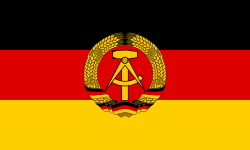Turn-Weltmeisterschaften (Gerätturnen)
Die Weltmeisterschaften im Gerätturnen werden seit 1903 ausgetragen. Zunächst starteten nur Männer, seit 1934 nehmen auch Frauen an den Wettkämpfen teil. International wird das Gerätturnen genauso wie Allgemeines Turnen, Trampolinturnen, Rhythmische Sportgymnastik, Sportaerobic und Sportakrobatik durch die Fédération Internationale de Gymnastique (FIG, Internationaler Turnverband) und die Union Européenne de Gymnastique (UEG, Europäische Turnunion) vertreten.
Austragungsorte
(* 1994 fanden die Mannschafts- und Einzelwettbewerbe bei getrennten Weltmeisterschaften statt. Während die Einzel-Finals im April in Brisbane ausgetragen wurden, starteten die Mannschaftswettkämpfe im November in Dortmund.)
Medaillenspiegel *
| Rang | Land | Gesamt | |||
|---|---|---|---|---|---|
| 1 | 112 | 85 | 40 | 237 | |
| 2 | 87 | 54 | 45 | 186 | |
| 3 | 59 | 50 | 41 | 150 | |
| 4 | 50 | 53 | 69 | 172 | |
| 5 | 48 | 45 | 40 | 133 | |
| 5 | 42 | 46 | 63 | 151 | |
| 7 | 29 | 29 | 20 | 78 | |
| 8 | 28 | 28 | 24 | 80 | |
| 9 | 25 | 28 | 46 | 99 | |
| 10 | 19 | 16 | 15 | 50 | |
| 11 | 17 | 11 | 8 | 36 | |
| 12 | 15 | 14 | 28 | 57 | |
| 13 | 14 | 6 | 12 | 30 | |
| 14 | 12 | 8 | 8 | 28 | |
| 15 | 11 | 15 | 8 | 34 | |
| 16 | 8 | 3 | 3 | 14 | |
| 17 | 7 | 11 | 15 | 33 | |
| 18 | 7 | 9 | 9 | 25 | |
| 19 | 7 | 2 | 2 | 11 | |
| 20 | 6 | 8 | 3 | 17 | |
| 21 | 6 | 6 | 4 | 16 | |
| 22 | 6 | 2 | 3 | 11 | |
| 23 | 5 | 6 | 12 | 23 | |
| 24 | 5 | 2 | 9 | 16 | |
| 25 | 3 | 4 | 0 | 7 | |
| 26 | 3 | 3 | 2 | 8 | |
| 27 | 3 | 1 | 2 | 6 | |
| 28 | 2 | 5 | 2 | 9 | |
| 29 | 2 | 4 | 6 | 12 | |
| 30 | 2 | 4 | 4 | 10 | |
| 31 | 2 | 1 | 1 | 4 | |
| 32 | 1 | 6 | 5 | 12 | |
| 33 | 1 | 2 | 3 | 6 | |
| 34 | 1 | 2 | 1 | 4 | |
| 35 | 1 | 1 | 1 | 3 | |
| 35 | 1 | 1 | 1 | 3 | |
| 37 | 1 | 1 | 0 | 2 | |
| 38 | 1 | 0 | 4 | 5 | |
| 39 | 1 | 0 | 0 | 1 | |
| 40 | 0 | 2 | 3 | 5 | |
| 40 | 0 | 2 | 3 | 5 | |
| 42 | 0 | 2 | 1 | 3 | |
| 43 | 0 | 1 | 1 | 2 | |
| 44 | 0 | 0 | 1 | 1 | |
| 44 | 0 | 0 | 1 | 1 | |
| 44 | 0 | 0 | 1 | 1 | |
| 44 | 0 | 0 | 1 | 1 | |
| 44 | 0 | 0 | 1 | 1 |
Erfolgreichste Medaillengewinner
| Platz | Name | Land | Von | Bis | Gesamt | |||
|---|---|---|---|---|---|---|---|---|
| 1 | Simone Biles | 2013 | 2023 | 23 | 4 | 3 | 30 | |
| 2 | Wital Schtscherba | 1991 | 1996 | 12 | 6 | 5 | 23 | |
| 3 | Kōhei Uchimura | 2009 | 2018 | 10 | 6 | 5 | 21 | |
| 4 | Joseph Martínez | 1903 | 1909 | 10 | 1 | - | 11 | |
| 5 | Swetlana Chorkina | 1994 | 2003 | 9 | 8 | 3 | 20 | |
| 6 | Gina Gogean | 1993 | 1997 | 9 | 2 | 4 | 15 | |
| 7 | Juri Koroljow | 1981 | 1987 | 9 | 2 | 1 | 12 | |
| 8 | Larissa Latynina | 1954 | 1966 | 8 | 4 | 1 | 13 | |
| 9 | Dmitri Bilosertschew | 1983 | 1987 | 8 | 4 | 0 | 12 | |
| 10 | Marian Dragulescu | 2001 | 2015 | 8 | 2 | - | 10 | |
| 11 | Chen Yibing | 2006 | 2011 | 8 | - | - | 8 | |
| 12 | Eizō Kenmotsu | 1970 | 1979 | 7 | 5 | 3 | 15 | |
| 13 | Wladimir Artjomow | 1983 | 1989 | 7 | 5 | 2 | 14 | |
| 14 | Akinori Nakayama | 1966 | 1970 | 7 | 2 | 3 | 12 | |
| 14 | Alexander Nikolajewitsch Ditjatin | 1978 | 1981 | 7 | 2 | 3 | 12 | |
| 16 | Ljudmila Turischtschewa | 1970 | 1974 | 7 | 2 | 2 | 11 | |
| 17 | Daniela Silivaș | 1985 | 1989 | 7 | 2 | 1 | 10 | |
| 18 | Qin Xiao | 1997 | 2007 | 7 | 2 | - | 9 | |
| 19 | Yang Wei | 1999 | 2007 | 7 | 1 | 2 | 10 | |
| 20 | Boris Schachlin | 1954 | 1966 | 6 | 6 | 2 | 14 | |
| 21 | Joseph Czada | 1907 | 1913 | 6 | 6 | - | 12 | |
| 22 | Marco Torrès | 1909 | 1922 | 6 | 5 | 1 | 12 | |
| 23 | Eugen Mack | 1934 | 1938 | 6 | 4 | 1 | 11 | |
| 24 | Simona Amânar | 1994 | 1999 | 6 | 4 | - | 10 | |
| 25 | Ihor Korobtschinskyj | 1989 | 1994 | 6 | 3 | 2 | 11 | |
| 26 | Li Xiaopeng | 1997 | 2005 | 6 | 2 | 1 | 9 | |
| 27 | Shigeru Kasamatsu | 1974 | 1979 | 6 | 2 | - | 8 | |
| 28 | Walentin Mogilny | 1985 | 1989 | 6 | 1 | - | 7 | |
| 29 | Hryhorij Missjutin | 1991 | 1996 | 6 | - | 4 | 10 | |
| 30 | Tamara Manina | 1950 | 1962 | 6 | - | 3 | 9 | |
| 31 | Georges Dejaeghère | 1903 | 1905 | 6 | - | - | 6 | |
| 32 | Alexei Nemow | 1994 | 2003 | 5 | 4 | 4 | 13 | |
| 33 | Jelena Schuschunowa | 1985 | 1987 | 5 | 4 | 2 | 11 | |
| 33 | Nelli Kim | 1974 | 1979 | 5 | 4 | 2 | 11 | |
| 33 | Jan Gajdos | 1926 | 1938 | 5 | 4 | 2 | 11 | |
| 36 | Lavinia Miloșovici | 1991 | 1995 | 5 | 3 | 4 | 12 | |
| 37 | Leon Štukelj | 1922 | 1930 | 5 | 3 | 2 | 10 | |
| 38 | Shannon Miller | 1991 | 1995 | 5 | 3 | 1 | 9 | |
| 39 | Swjatlana Bahinskaja | 1987 | 1992 | 5 | 3 | - | 8 | |
| 40 | Li Jing | 1989 | 1994 | 5 | 2 | 4 | 11 | |
| 41 | František Erben | 1907 | 1911 | 5 | 2 | 3 | 10 | |
| 42 | Kai Zou | 2006 | 2011 | 5 | 2 | - | 7 | |
| 43 | Giorgio Zampori | 1909 | 1913 | 5 | 1 | 4 | 10 | |
| 44 | Maxi Gnauck | 1979 | 1983 | 5 | 1 | 3 | 9 | |
| 45 | Andreea Răducan | 1999 | 2001 | 5 | 1 | 2 | 8 | |
| 46 | Haibin Teng | 1997 | 2010 | 5 | 1 | - | 6 | |
| 46 | Cheng Fei | 2005 | 2007 | 5 | 1 | - | 6 | |
| 48 | Juri Chechi | 1991 | 1997 | 5 | - | 2 | 7 | |
| 49 | Walentin Muratow | 1954 | 1958 | 5 | - | 1 | 6 | |
| 50 | Vlasta Dekanowa | 1934 | 1938 | 5 | - | - | 5 | |
| 73 | Oksana Chusovitina | 1991 | 2011 | 3 | 4 | 4 | 10 | |
| 122 | Sylvio Kroll | 1985 | 1991 | 2 | 3 | 4 | 9 | |
| 127 | Erika Zuchold | 1966 | 1970 | 2 | 3 | - | 5 |
Siehe auch
- Turn-Europameisterschaften (Gerätturnen)
- Liste der Turn-Weltmeister (Gerätturnen)
- Weltmeisterschaften der Rhythmischen Sportgymnastik
Einzelnachweise
- ↑ 50. Jubiläums-Turn-Weltmeisterschaften 2021 in Kitakyushu. In: Gerätturnen, 8. November 2020. Auf GymMedia.de, abgerufen am 12. November 2020.
Auf dieser Seite verwendete Medien
Autor/Urheber: F l a n k e r, Lizenz: CC BY-SA 2.5
Flagge des Königreich Italiens (1861-1946) In einem staatlichem oder militärischem Kontext ist die Version mit der Krone zu verwenden.
Autor/Urheber: F l a n k e r, Lizenz: CC BY-SA 2.5
Flagge des Königreich Italiens (1861-1946) In einem staatlichem oder militärischem Kontext ist die Version mit der Krone zu verwenden.
Die quadratische Nationalfahne der Schweiz, in transparentem rechteckigem (2:3) Feld.
(c) I, Cmapm, CC BY-SA 3.0
The flag of the Soviet Union (1955-1991) using a darker shade of red.
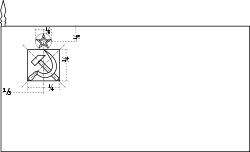
(c) I, Cmapm, CC BY-SA 3.0
The flag of the Soviet Union (1955-1991) using a darker shade of red.

Flag of the Socialist Federal Republic of Yugoslavia (1946-1992).
The design (blazon) is defined in Article 4 of the Constitution for the Republic of Yugoslavia (1946). [1]
Flag of the Socialist Federal Republic of Yugoslavia (1946-1992).
The design (blazon) is defined in Article 4 of the Constitution for the Republic of Yugoslavia (1946). [1]
Autor/Urheber: Scroch, Lizenz: CC BY-SA 3.0
Flag of Bulgaria (1971-1990). Flag of Bulgaria with Bulgarian coat from 1971.
Autor/Urheber: Scroch, Lizenz: CC BY-SA 3.0
Flag of Bulgaria (1971-1990). Flag of Bulgaria with Bulgarian coat from 1971.
Flag of Canada introduced in 1965, using Pantone colors. This design replaced the Canadian Red Ensign design.
Flagge des Vereinigten Königreichs in der Proportion 3:5, ausschließlich an Land verwendet. Auf See beträgt das richtige Verhältnis 1:2.
Flagge des Vereinigten Königreichs in der Proportion 3:5, ausschließlich an Land verwendet. Auf See beträgt das richtige Verhältnis 1:2.
Flag of Australia, when congruence with this colour chart is required (i.e. when a "less bright" version is needed).
See Flag of Australia.svg for main file information.bendera Indonesia
Autor/Urheber: B1mbo, Lizenz: CC BY-SA 2.5
Zeichnung einer Goldmedaille, basierend auf Olympic rings.svg.
Autor/Urheber: B1mbo, Lizenz: CC BY-SA 2.5
Zeichnung einer Silbermedaille, basierend auf Olympic rings.svg.
Autor/Urheber: B1mbo, Lizenz: CC BY-SA 2.5
Zeichnung einer Bronzemedaille, basierend auf Olympic rings.svg.
Das Bild dieser Flagge lässt sich leicht mit einem Rahmen versehen
Flagge Österreichs mit dem Rot in den österreichischen Staatsfarben, das offiziell beim österreichischen Bundesheer in der Charakteristik „Pantone 032 C“ angeordnet war (seit Mai 2018 angeordnet in der Charakteristik „Pantone 186 C“).
Chinese Taipei Olympic Flag. According to the official website of Chinese Taipei Olympic Committee, Blue Sky(circle) & White Sun(triangles) above the Olympic rings is neither the National Emblem of the Republic of China, nor the Party Emblem of Kuomintang (KMT), but a design in between, where the triangles do not extend to the edge of the blue circle, as registered at International Olympic Committee in 1981 and digitally rendered in 2013. Besides, the blue outline of the five-petaled plum blossom is broader than the red one. Moreover, the CMYK code of the blue one and the Blue Sky & White Sun is "C100-M100-Y0-K0", and different from the Olympic rings (C100-M25-Y0-K0). Note that it's the only version recognized by IOC.
Man sagt, dass der grüne Teil die Mehrheit der katholischen Einwohner des Landes repräsentiert, der orange Teil die Minderheit der protestantischen, und die weiße Mitte den Frieden und die Harmonie zwischen beiden.
Die Staatsflagge der Deutschen Demokratischen Republik, vom 1. Oktober 1959 bis 3. Oktober 1990
Flag of Hungary from 6 November 1915 to 29 November 1918 and from August 1919 until mid/late 1946.
Autor/Urheber:
unbekannt
, Lizenz: LogoLogo der FIG
Pan-Slavic flag. Emerged from 1848 Prague pan-Slavic conference, or interpretations of the resolutions of the conference. Drawn by Fibonacci.
House colours of the House of Habsburg









